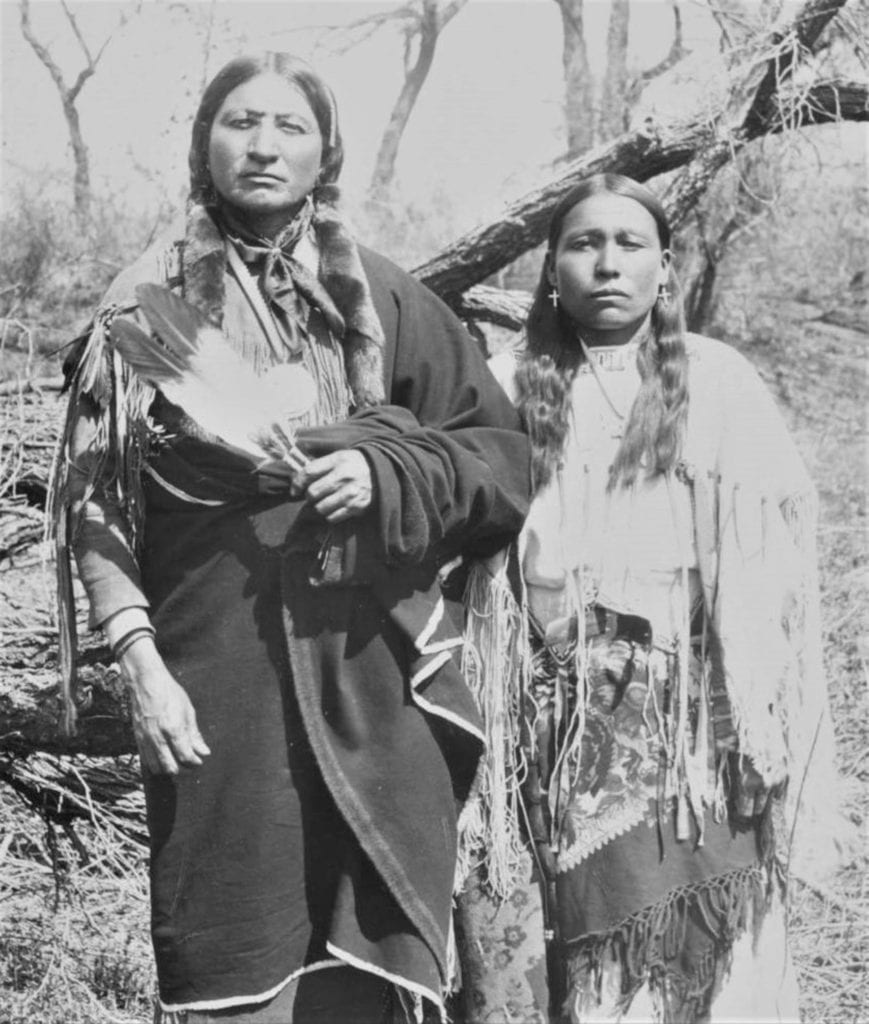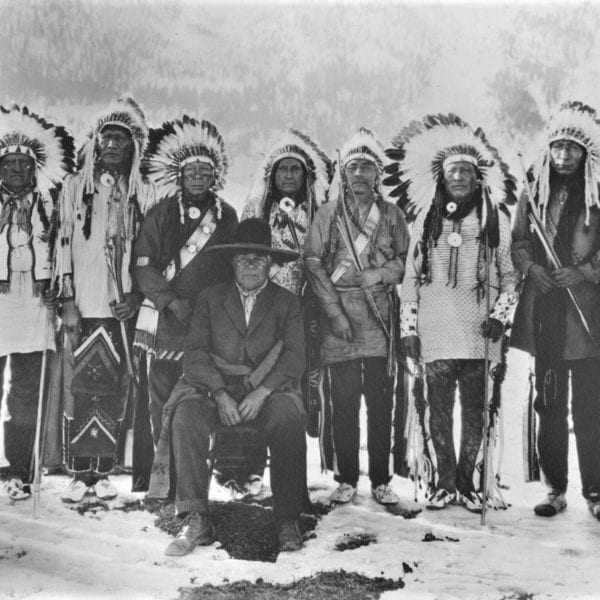Wovoka, in the years following his revelation, received letters from distant
Indian groups in “considerable numbers.” Ed A. Dyer, who operated
a general store in Mason Valley, frequently translated and answered these
letters. Dyer stated that many were
from Grant Left Hand and postmarked
Darlington, Oklahoma, home of the Cheyenne-Arapaho
Agency. Left Hand
seemed to be a “scribe for most of the Indian Nations” as he invariably
sought invitations for others
to see Wovoka. He also requested multiple
sacred items from Wovoka, who made a habit of sending visiting delegates
back with balls of red ochre, magpie feathers, rabbit furs, and other religious
tokens. This led others
to want balls of red ochre of their own, and Wovoka
obliged, sending and usually selling the paint balls, magpie feathers, and
items of his worn clothing, particularly shirts and hats. Just as Sears Roebuck
was ramping up its mail order business, Wovoka was selling a great
many “Texas Plaza Hats” for twenty dollars apiece and shipping them 1,500
miles through the United States Postal Service.
The “Father,”
as the letters
addressed him, received all kinds of gifts of “Indian finery”: moccasins,
vests, gloves, shirts, pants, and headdresses, particularly from Bannocks in Idaho. Wovoka, with the aid of Dyer, would reply with gratitude and most
likely a word or two about his dance.
However, Wovoka, for a time, responded to these
letters with unusual
secrecy. He would sneak into Dyer’s grocery store at night, have the letters
read to him, and have Dyer prepare the proper packages in response. In
the fall of 1892, Agent C. C. Warner at the Nevada Agency grew concerned
with claims from the press that Wovoka was having “an evil influence” on
the Indians who visited him. The Silver State reported that Wovoka had
sent “emissaries” to Fort Hall, “urging them to inaugurate ghost dances
and prepare for war this spring.” Wovoka knew the negative attention his activities were
drawing.



